Welcome to our 2023 guide on the best lenses for portraits! As a photographer, you know that choosing the right lens is crucial to capturing stunning portraits. With so many options available, it can be overwhelming to decide which lens to invest in. That’s why we’ve put together this guide to help you find the best lenses for portraits in 2023.
Why choosing the right lens for portrait photography is important
When it comes to portrait photography, the lens you choose can make all the difference. The right lens can help you capture sharp, detailed images with beautiful Bokeh and creamy backgrounds. On the other hand, the wrong lens can result in blurry, unflattering photos that don’t do your subject justice.
One of the most important factors to consider when choosing a lens for portraits is focal length. A lens with a focal length between 50mm and 85mm is ideal for portraits, as it allows you to capture your subject’s face and upper body without distortion. Wide-angle lenses, on the other hand, can make your subject’s features appear distorted and unflattering.
Another important factor to consider is the aperture. A wide aperture, such as f/1.8 or f/1.4, allows you to create a shallow depth of field, which can help your subject stand out from the background and create a beautiful bokeh effect. A narrow aperture, such as f/8 or f/11, is ideal for group portraits or when you want to capture more of the scene in focus.
In addition to focal length and aperture, there are other factors to consider when choosing the best lens for portraits. These include:
- Image stabilization: This feature can help you capture sharp images, even in low light conditions.
- Autofocus: A fast and accurate autofocus system can help you capture sharp images of moving subjects.
- Build quality: A well-built lens can withstand the wear and tear of regular use and last for years to come.
By considering all of these factors, you can choose the best lens for your specific needs and capture stunning portraits that you and your subjects will love.
Prime or zoom lens?
When it comes to shooting portraits, one of the biggest decisions you’ll need to make is whether to use a prime or zoom lens. Both types of lenses have their advantages and disadvantages, so it’s important to consider your specific needs before making a decision.
Here are some things to keep in mind when deciding between a prime and zoom lens for shooting portraits:
-
Prime lenses:
They have a fixed focal length, which means they can’t zoom in or out. This might seem like a disadvantage, but it actually has several benefits when it comes to portrait photography. For one, prime lenses tend to have wider apertures than zoom lenses, which allows you to create a shallow depth of field and blur the background. Additionally, prime lenses are often sharper than zoom lenses, which is important for capturing the details of your subject’s face.
-
Zoom lenses
On the other hand, allow you to zoom in and out, which can be useful if you need to quickly adjust your framing. They also tend to be more versatile than prime lenses, as they can be used for a variety of different types of photography. However, zoom lenses typically have smaller maximum apertures than prime lenses, which can make it more difficult to create a shallow depth of field.
Ultimately, the decision between a prime or zoom lens will depend on your specific needs as a photographer. If you’re primarily shooting portraits and want to create a shallow depth of field, a prime lens is likely the better choice. However, if you need more versatility and the ability to quickly adjust your framing, a zoom lens might be the way to go.
Important note
Checking lens compatibility is very important when choosing a lens for your portrait photography. Whether you’re using a Canon, Nikon, Sigma, or Sony camera, make sure you’re purchasing a lens with the appropriate mount for your camera.
For more details about lens mounting for popular camera brands check my post “Types of Camera Lens Mounts”
The 15 Best Lenses for Portraits
I- Prime lenses
- Fujifilm XF 56mm f/1.2 R
- Nikon NIKKOR Z 85mm f/1.8 S
- Sigma 85mm f/1.4 DG HSM Art
- Sony FE 85mm f/1.4 GM
- Canon EF 85mm f/1.2L II USM
- Canon RF 85mm f/.2L USM
- Nikon AF-S NIKKOR 105mm f/1.4E ED
- Sony FE 135mm f/1.8 GM
II- Zoom lenses
- Tamron SP 70-200mm f/2.8 Di VC USD G2
- Sigma 70-200mm f/2.8 DG OS HSM Sports
- Canon EF 70-200mm f2.8L IS III USM
- Canon RF 70-200mm f/2.8L IS USM
- Nikon AF-S NIKKOR 70-200mm f/2.8E FL ED VR
- Nikon NIKKOR Z 70-200mm f/2.8 VR S
- Sony FE 70-200mm f/2.8 GM OSS
No matter what your budget or specific needs are, there’s a lens on the above list that’s perfect for your portrait photography. In the next sections of this guide, we’ll dive deeper into each of these lenses and provide a description of each lens, its pros, and cons.
I- Prime Lenses
Key Features
- X-Mount Lens/APS-C Format
- 85mm (35mm Equivalent)
- Aperture Range: f/1.2 to f/16
- One Double-Sided Aspherical Element
- Two Extra-Low Dispersion Elements
- Super EBC Coating
- Internal Focusing Mechanism
- Rounded 7-Blade Diaphragm
The XF 56mm f/1.2 R from FUJIFILM is an excellent choice for portrait photography due to its fast f/1.2 maximum aperture, which allows for great subject isolation and low-light performance.
It features an optical design that includes both aspherical and extra-low dispersion elements, which work together to minimize aberrations, color fringing, and distortion, resulting in sharp and clear images.
The lens also has a Super EBC coating that reduces flare and ghosting, improving contrast and color accuracy in bright and backlit conditions.
Additionally, the lens has an internal focusing mechanism that provides quick focusing performance, and a rounded seven-blade diaphragm that produces a pleasing bokeh quality.
Pros and cons
| Pros | Cons |
|---|---|
| Fast f/1.2 maximum aperture | Relatively expensive |
| High-quality optics with aspherical and extra-low dispersion elements | Relatively heavy and bulky |
| Super EBC coating reduces flare and ghosting | Autofocus can be slow and noisy |
| Internal focusing mechanism provides quick focusing performance | No image stabilization |
| Rounded seven-blade diaphragm produces pleasing bokeh quality |

Photo by preview
Key Features
- Z-Mount Lens/FX Format
- Aperture Range: f/1.8 to f/16
- Two Extra-Low Dispersion Elements
- Nano Crystal & Super Integrated Coatings
- Multi-Focus Stepping Motor AF System
- Programmable Control Ring
- Weather-Sealed Construction
- Rounded 9-Blade Diaphragm
The NIKKOR Z 85mm f/1.8 S from Nikon is a popular choice for portrait photography due to its flattering focal length and bright f/1.8 design.
The maximum aperture strikes a balance between size, weight, and speed, offering suitable speed for working in difficult lighting yet remaining sleek enough for handheld use.
The lens features two extra-low dispersion elements that help to reduce color fringing and chromatic aberrations, resulting in high clarity and color fidelity.
Additionally, both Nano Crystal and Super Integrated Coatings are used to suppress flare and ghosting, improving color fidelity and contrast.
The lens also features a multi-focus system that employs two stepping motors, which allows for impressively fast, accurate, and quiet focus performance, along with full-time manual focus override, making it suitable for both stills and video needs.
Furthermore, a programmable control ring can be set for intuitive adjustment over a variety of camera and exposure settings, adding to the lens’s versatility.
Pros and cons
| Pros | Cons |
|---|---|
| image quality with sharpness and clarity | Expensive compared to other 85mm lenses |
| Fast and accurate autofocus system | No image stabilization |
| Lightweight and compact design | Limited compatibility with non-Nikon cameras |
| Weather-sealed construction for durability | No aperture ring for manual control |
| Smooth and creamy bokeh for beautiful background blur | Some distortion and vignetting at wider apertures |

Photo by Amir Taheri
Key Features
- EF-Mount Lens/Full-Frame Format
- Aperture Range: f/1.4 to 16
- Two Low Dispersion Elements
- One Aspherical Element
- Super Multi-Layer Coating
- Hyper Sonic AF Motor, Manual Override
- Rounded 9-Blade Diaphragm
- TSC Material, Brass Bayonet Mount
- Compatible with Sigma USB Dock
The Sigma 85mm f/1.4 DG HSM Art Lens is a premium portrait prime lens designed for Canon EF mount. It features a wide f/1.4 aperture, two SLD elements, one anomalous partial dispersion/high-refractive index element, and one aspherical element to minimize aberrations and deliver a sharp and clear image.
The lens incorporates a Super Multi-Layer coating to combat flare and ghosting. It features a Hyper Sonic AF motor for swift and accurate autofocus, with a generously sized focusing ring for manual focus override.
The lens achieves smooth and circular bokeh with a rounded 9-blade diaphragm. It is constructed from a durable and lightweight thermally stable composite material, with a brass bayonet mount for durability. The lens is fully compatible with Sigma’s USB Dock for customization and optimization.
Pros and cons
| Pros | Cons |
|---|---|
| Excellent image quality with sharpness and detail | Large and heavy, may be cumbersome to carry around |
| Wide maximum aperture of f/1.4 | Pricey compared to other 85mm lenses |
| Smooth and pleasing bokeh | Autofocus performance can be inconsistent |
| Sturdy build quality | Manual focus ring can be stiff |
| Compatible with Canon EF mount | No image stabilization |
| Ideal for portrait photography | Some users report focusing accuracy issues |
| Good low-light performance | Lack of weather sealing |
There are other styles of Sigma 85mm f/1.4 DG HSM Art Lens for Nikon cameras and Sigma cameras.
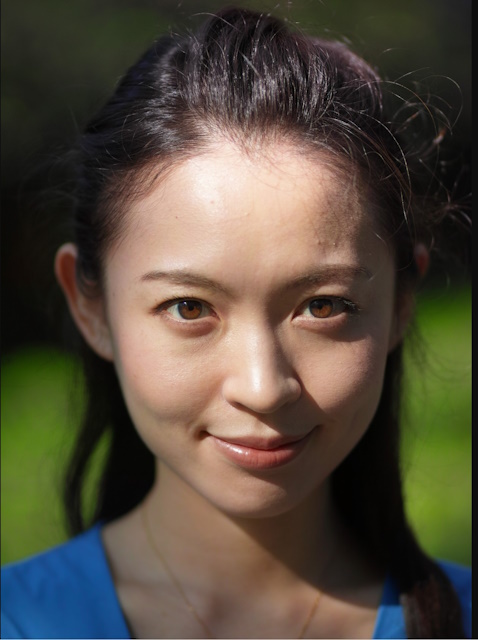
Photo by Sigma
Key Features
- E-Mount Lens/Full-Frame Format
- Aperture Range: f/1.4 to f/16
- One XA Element and Three ED Elements
- Nano AR Coating
- Linear Super Sonic Wave AF Motor
- AF/MF Switch; Internal Focus
- Focus Hold Button
- Physical Aperture Ring; De-Click Switch
- Dust and Moisture-Resistant Construction
- Rounded 11-Blade Diaphragm
The Sony FE 85mm f/1.4 GM lens is a high-performance prime lens designed for Sony’s full-frame E-mount cameras. It features a focal length of 85mm, making it well-suited for portrait photography, with a wide maximum aperture of f/1.4 for excellent low-light performance and shallow depth of field.
The lens incorporates advanced optics, including an XA lens element, to deliver outstanding image quality with high resolution from corner to corner.
The autofocus system is fast and accurate, driven by a Dual XD Linear Motor, and the lens is constructed with a robust build quality, featuring dust and moisture resistance. It has a smooth manual focus ring, a customizable focus hold button, and 11 rounded aperture blades for smooth, circular bokeh.
The lens is also compatible with Sony’s advanced features, such as Eye AF and in-body image stabilization.
Pros and cons
| Pros | Cons |
|---|---|
| Outstanding image quality with excellent sharpness and detail | High price compared to other 85mm lenses |
| Wide maximum aperture of f/1.4 | Slightly larger and heavier than some competitors |
| Beautiful and creamy bokeh | Autofocus can sometimes hunt in low-light |
| Professional build quality and weather sealing | Lacks optical image stabilization |
| Fast and accurate autofocus performance | Some users find the manual focus ring less smooth |
| Ideal for portrait photography and low-light | Limited focus hold button functionality |
| Excellent color rendition and contrast |

Photo by Sony
Key Features
- EF-Mount Lens/Full-Frame Format
- Aperture Range: f/1.2 to f/16
- One Aspherical Element
- Super Spectra Coating
- Floating Optical System
- Ring-Type Ultrasonic Motor AF System
- Weather-Sealed Construction
- Rounded 8-Blade Diaphragm
The EF 85mm f/1.2L II USM from Canon is an L-series lens that combines a short-telephoto focal length and a bright maximum aperture.
It is specifically designed for portrait photography. With its remarkably fast f/1.2 aperture, it offers excellent control over the depth of field, allowing you to isolate subjects and achieve desirable selective focus effects.
The lens features a sophisticated design, including an aspherical element that minimizes spherical aberrations, resulting in exceptional sharpness and clarity.
A floating optical system is also incorporated to maintain image quality throughout the entire focusing range. Additionally, a Super Spectra coating is applied to reduce flare and ghosting, enhancing contrast and color accuracy under various lighting conditions.
To further enhance performance, the lens utilizes a ring-type USM for fast and silent autofocus, while also providing full-time manual focus control.
Pros and cons
| Pros | Cons |
|---|---|
| Exceptional image quality with excellent sharpness | Expensive compared to other 85mm lenses |
| Wide maximum aperture of f/1.2 | Heavy and bulky |
| Smooth and creamy bokeh | Slower autofocus compared to some other lenses |
| Professional build quality and weather sealing | No image stabilization |
| Distinctive and unique look | Chromatic aberration can be present at wider apertures |
| Ideal for portrait photography and low-light situations |
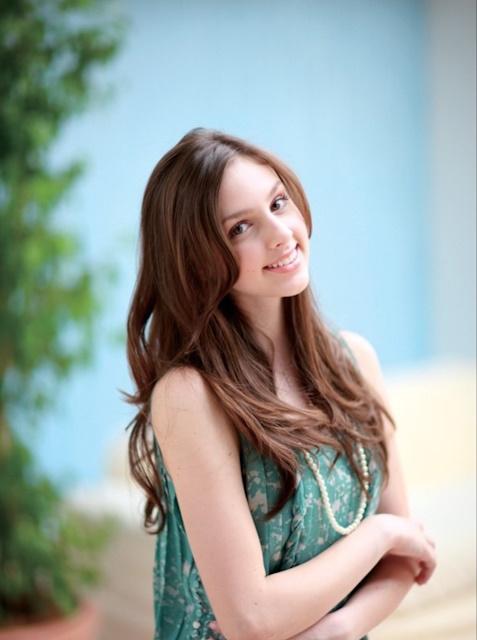
Photo by Canon
Key Features
- RF-Mount Lens/Full-Frame Format
- Aperture Range: f/1.2 to f/16
- Blue Spectrum Refractive Optics Element
- One UD Element, One Aspherical Element
- Air Sphere Coating
- Ring-Type Ultrasonic Motor AF System
- Customizable Control Ring
- Rounded 9-Blade Diaphragm
The Canon RF 85mm f/1.2 L USM combines a beloved short-telephoto focal length with an impressively wide maximum aperture.
Its advanced optical design ensures well-corrected imagery and the fast f/1.2 design excels in challenging lighting situations while also benefiting shallow depth of field and selective focus techniques.
The optical layout incorporates a special element called Blue Spectrum Refractive Optics, which greatly reduces chromatic aberrations and color fringing, resulting in exceptional clarity and color accuracy.
Additionally, the lens features an ultra-low dispersion element and one aspherical element to further control various aberrations and distortion, resulting in outstanding sharpness and resolution.
To combat flare and ghosting in bright and backlit conditions, each element is treated with an Air Sphere Coating, which maintains high contrast and color fidelity.
Pros and cons
| Pros | Cons |
|---|---|
| Excellent image quality with sharpness and detail | Not as wide maximum aperture as some competitors (f/2) |
| Lightweight and compact design | Slightly pricier compared to other 85mm lenses |
| Fast and accurate autofocus performance | No optical image stabilization |
| Professional build quality and weather sealing | Manual focus ring can be less smooth |
| Good control over depth of field | Some users report minor chromatic aberration |
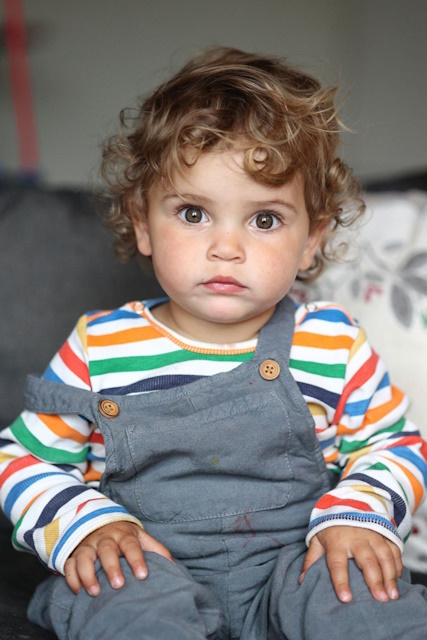
Photo by Canon
Key Features
- F-Mount Lens/FX Format
- Aperture Range: f/1.4 to f/16
- Three Extra Low-Dispersion Elements
- Nano Crystal Coating
- Protective Fluorine Coating
- Silent Wave Motor AF System
- Electromagnetic Diaphragm Mechanism
- Rounded 9-Blade Diaphragm
The AF-S NIKKOR 105mm f/1.4E ED Lens from Nikon introduces an exciting new option in the short telephoto lens market. This lens is specifically designed for FX-format F-mount DSLRs and offers an incredibly bright portrait-length solution.
Its wide maximum aperture of f/1.4 not only enables exceptional performance in low-light situations but also provides extensive control over focus, allowing for captivating shallow depth-of-field imagery.
Throughout the aperture range, the lens maintains impressive clarity and sharpness, thanks to its optical design that incorporates extra-low dispersion glass, effectively minimizing chromatic aberrations and color fringing.
Moreover, the lens features a Nano Crystal Coat, which effectively reduces flare and ghosting when shooting under strong lighting conditions.
With its 105mm focal length and fast maximum aperture, this lens brings a unique set of possibilities for portrait photographers and event shooters, expanding their creative potential.
Pros and cons
| Pros | Cons |
|---|---|
| Excellent image quality with exceptional sharpness and detail | Relatively high price compared to other 105mm lenses |
| Wide maximum aperture of f/1.4 | Bulky and heavy, may be less portable |
| Smooth and pleasing bokeh | Autofocus can be slower compared to some lenses |
| Professional build quality and weather sealing | No built-in optical image stabilization |
| Minimal distortion and chromatic aberration | Some users report focus breathing at close distances |
| Good control over depth of field | Limited focus distance compared to some lenses |

Photo by Filckr
Key Features
- E-Mount Lens/Full-Frame Format
- Aperture Range: f/1.8 to f/22
- XA Element, Super ED, and ED Elements
- Nano AR and Fluorine Coatings
- XD Linear Motor AF System
- AF/MF Switch, Internal Focus
- Two Focus Hold Buttons
- Physical Aperture Ring, De-Click Switch
- Dust and Moisture-Resistant Construction
- Rounded 11-Blade Diaphragm
The Sony FE 135mm f/1.8 GM Lens is a high-performance prime lens designed for Sony’s full-frame mirrorless cameras. It features a focal length of 135mm, making it suitable for various genres of photography, including portraiture, sports, and wildlife.
The bright f/1.8 maximum aperture enables excellent low-light performance and provides a shallow depth of field for beautifully blurred backgrounds and enhanced subject separation. The optical design incorporates extra-low dispersion (ED) and extreme aspherical (XA) elements to minimize chromatic aberrations, distortion, and spherical aberrations, ensuring exceptional image sharpness, clarity, and color accuracy throughout the frame.
The lens features a fast and precise autofocus system driven by dual linear motors, making it well-suited for capturing fast-moving subjects or tracking subjects during video recording.
It is built with robust and weather-sealed construction, offering customizable focus hold buttons and an aperture ring with a switchable click option for enhanced control and ease of use.
Pros and cons
| Pros | Cons |
|---|---|
| Excellent image quality with exceptional sharpness | High price compared to other 135mm lenses |
| Wide maximum aperture of f/1.8 | Slightly larger and heavier than some competitors |
| Beautiful and creamy bokeh | Autofocus can sometimes struggle in low-light |
| Professional build quality and weather sealing | No built-in optical image stabilization |
| Fast and accurate autofocus performance |

Photo by Sony
Zoom Lenses
9. Tamron SP 70-200mm f/2.8 Di VC USD G2
Key Features
- EF-Mount Lens/Full-Frame Format
- Aperture Range: f/2.8 to f/22
- One XLD Element, Five LD Elements
- Ultrasonic Silent Drive Autofocus Motor
- VC Image Stabilization
- Dust and Moisture-Resistant Construction
- Removable Arca-Compatible Tripod Mount
- Rounded Nine-Blade Diaphragm
- Compatible with TAP-in Console
The Tamron Canon EF-mount SP 70-200mm f/2.8 Di VC USD G2 Lens is a versatile lens with a constant maximum aperture of f/2.8, providing excellent brightness. The lens incorporates advanced optical designs, including one XLD element and five LD elements, to reduce color fringing and chromatic aberrations for precise clarity and accurate color reproduction.
The lens is further enhanced with BBAR and eBAND coatings that minimize flare and ghosting.
The advanced Vibration Compensation (VC) system compensates for camera shake, providing up to five stops of stabilization for sharper handheld shots. The lens is equipped with a ring-type Ultrasonic Silent Drive autofocus motor and offers full-time manual focus override.
It is also designed to withstand dust and moisture, making it suitable for challenging environmental conditions.
Pros and cons
| Pros | Cons |
|---|---|
| Excellent image quality | Not as weather-sealed as some other lenses |
| Fast and accurate autofocus | Focus breathing can be an issue for some users |
| Vibration reduction | No built-in hood |
| Lightweight and compact for a 70-200mm f/2.8 lens | Relatively expensive |
| Durable build quality |

Photo by Flickr
Key Features
- EF-Mount Lens/Full-Frame Format
- Aperture Range: f/2.8 to f/22
- Nine FLD Elements, One SLD Element
- Super Multi-Layer Coating
- Hyper Sonic AF Motor
- Intelligent OS Image Stabilization
- Removable Arca-Type Tripod Foot
- Dust- and Moisture-Sealed Construction
- Rounded 11-Blade Diaphragm
- Compatible with Sigma Teleconverters
The Sigma Canon EF-mount 70-200mm f/2.8 DG OS HSM Sports Lens is a versatile lens suitable for event coverage, portraiture, and sports photography. It features a fast and constant f/2.8 maximum aperture, 10 low dispersion elements, and a Super Multi-Layer Coating to reduce chromatic aberrations, color fringing, ghosting, and flare.
The Intelligent OS system effectively reduces camera shake, resulting in sharper images when shooting handheld. The Hyper Sonic Motor ensures quick and quiet autofocus performance and enables full-time manual focus override.
The lens incorporates multiple seals to protect against dust and moisture, and a water- and oil-repellent coating has been applied to the exposed elements to prevent moisture, fingerprints, or smudges from adhering to the surface.
Pros and cons
| Pros | Cons |
|---|---|
| Excellent image quality | Heavy and large |
| Fast and accurate autofocus | Not weather-sealed |
| 4-stop image stabilization | Expensive |
| Durable construction | Long minimum focus distance |
| Rounded aperture blades | Creates 22-point starbursts |
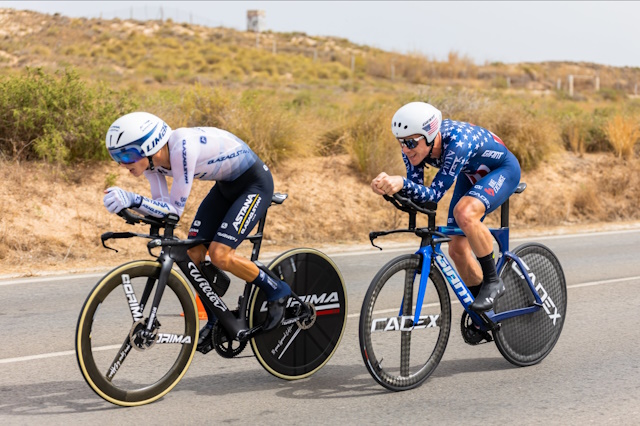
Photo by Flickr
Key Features
- EF-Mount Lens/Full-Frame Format
- Aperture Range: f/2.8 to f/32
- One Fluorite Element & Five UD Elements
- Air Sphere Coating
- Ring-Type Ultrasonic Motor AF System
- Optical Image Stabilizer
- Internal Focus, Focus Range Limiter
- Weather-Sealed Design, Fluorine Coating
- Detachable, Rotatable Tripod Collar
- Rounded 8-Blade Diaphragm
The Canon EF 70-200mm f/2.8L IS III USM lens is a versatile telephoto zoom lens suitable for a wide range of subjects, from portraiture to sports photography.
It features a fast constant f/2.8 maximum aperture, one fluorite element, and five UD elements to suppress chromatic aberrations and color fringing. The lens also incorporates an Air Sphere Coating to minimize flare and ghosting, enhancing color accuracy and contrast in all shooting conditions.
The Optical Image Stabilizer compensates for up to 3.5 stops of camera shake, enabling confident handheld shooting and facilitating low-light photography.
The lens utilizes a ring-type Ultrasonic Motor and an internal focusing mechanism for swift, silent, and precise autofocus performance. It also offers full-time manual focus override and is weather-sealed for reliable use in challenging environmental conditions.
Pros and cons
| Pros | Cons |
|---|---|
| Excellent image quality throughout the zoom range | Very expensive |
| Fast and accurate autofocus | Large and heavy |
| Weather-sealed | Not compatible with EF-S mount cameras |
| 5-stop image stabilization | Long minimum focus distance (5.2 feet) |
| Smooth and quiet operation | Not stabilized when used with teleconverters |
| Built to last | Requires a lens hood for protection |

Photo by Michael
Key Features
- RF-Mount Lens/Full-Frame Format
- Aperture Range: f/2.8 to f/32
- One Super UD Element, One UD Element
- Two Aspherical Elements
- Air Sphere and Fluorine Coatings
- Dual Nano USM AF System
- Optical Image Stabilizer
- Customizable Control Ring
- Detachable, Rotatable Tripod Collar
- Rounded 9-Blade Diaphragm
The Canon RF 70-200mm f/2.8L IS USM is a professional-grade telephoto zoom lens for Canon’s RF mount mirrorless cameras. It is the lightest and shortest 70-200mm f/2.8 lens that Canon has ever made, and it features a number of advanced optical and technological features, including:
- A constant f/2.8 maximum aperture provides excellent performance in low-light conditions and allows for greater control over depth of field.
- A sophisticated optical design includes one Super UD element, one UD element, and two aspherical elements to reduce aberrations and distortions for sharp, high-contrast images.
- Air Sphere and Fluorine coatings help to repel water, dust, and fingerprints, making the lens more resistant to the elements.
- A Dual Nano USM AF system provides fast, smooth, and quiet autofocus performance.
- Optical Image Stabilization (IS) provides up to 5 stops of shake reduction, helping to produce sharp images even when shooting handheld.
- A customizable control ring allows users to quickly and easily adjust a variety of settings, such as aperture, shutter speed, or ISO.
- A detachable, rotating tripod collar makes it easy to mount the lens on a tripod or monopod.
- A rounded 9-blade diaphragm produces smooth, natural-looking bokeh.
The Canon RF 70-200mm f/2.8L IS USM is a versatile and powerful telephoto zoom lens that is ideal for a wide range of photography applications, including portraiture, sports, wildlife, and event photography. It is a must-have lens for any serious photographer who uses a Canon RF mount mirrorless camera.
Pros and cons
| Pros | Cons |
|---|---|
| Excellent image quality | Not compatible with Canon's RF teleconverters |
| Fast and accurate autofocus | Telescoping design can be a bit flimsy |
| 5-stop image stabilization | More expensive than the EF equivalent |
| Weather-sealed construction | |
| Compact and lightweight |

Photo by Flickr
Key Features
- F-Mount Lens/FX Format
- Aperture Range: f/2.8 to f/22
- Six Extra-Low Dispersion Elements
- Fluorite and HRI Elements
- Nano Crystal & Super Integrated Coatings
- Silent Wave Motor AF System
- Vibration Reduction with Sport Mode
- Electromagnetic Diaphragm Mechanism
- Detachable, Rotatable Tripod Collar
- Rounded 9-Blade Diaphragm
The AF-S NIKKOR 70-200mm f/2.8E FL ED VR by Nikon is a versatile zoom lens designed for a portrait to telephoto photography. It features a wide range of longer-than-normal focal lengths and maintains a constant maximum aperture of f/2.8, making it suitable for various shooting situations.
The optical design of this lens has been enhanced to improve image quality, including six extra-low dispersion elements, one fluorite element, and one high refractive index element. The lens also features Nano Crystal and Super Integrated Coatings to minimize lens flare and improve contrast and color accuracy.
The lens incorporates a four-stop-effective Vibration Reduction system, a Silent Wave Motor AF system, and four focus buttons on the lens barrel for easily activating AF Lock. It also supports full-time manual focus override and includes fluorine coatings on the front and rear elements to protect against dust, moisture, and smudges.
Furthermore, the lens is built with a weather-sealed magnesium alloy construction, ensuring durability in harsh shooting conditions. The removable and rotating tripod collar allows for smooth and quick transitions between vertical and horizontal shooting.
Pros and cons
| Pros | Cons |
|---|---|
| Bright constant maximum aperture of f/2.8 | Expensive |
| Excellent image quality | Heavy |
| Superb sharpness | Not weather-sealed |
| Fast and accurate autofocus | Long minimum focus distance of 1.1 meters |
| Vibration Reduction (VR) with Sport Mode | Not compatible with all Nikon cameras |
| Nano Crystal and Super Integrated Coatings reduce flare and ghosting | Available in both F-mount and Z-mount |
| Detachable, rotatable tripod collar | |
| Rounded 9-blade diaphragm produces smooth bokeh |

Photo by Mario Alonso Cordoba Abarca
Key Features
- Z-Mount Lens/FX Format
- Aperture Range: f/2.8 to f/22
- ED, SR, and Fluorite Elements
- ARNEO and Nano Crystal Coatings
- Multi-Focus Stepping Motor AF System
- Vibration Reduction Image Stabilization
- Programmable Control Ring
- Information OLED Panel and L.Fn Button
- Weather-Sealed Design, Fluorine Coating
The NIKKOR Z 70-200mm f/2.8 VR S lens from Nikon is highly favored by sports, event, and portrait photographers. It is known for its remarkable versatility as a telephoto lens, thanks to its bright f/2.8 aperture.
This wide aperture allows for excellent performance in different lighting conditions and provides greater control over the depth of field, enabling photographers to isolate subjects with selective focus.
The lens’s optical design incorporates several advanced elements, including ED, fluorite, and SR elements, which effectively minimize color fringing and chromatic aberrations throughout the entire zoom range. This results in improved clarity and color accuracy in captured images. Furthermore, the lens features ARNEO and Nano Crystal Coats and a Super Integrated Coating, which effectively reduces flare, ghosting, and surface reflections.
In terms of focusing capabilities, the lens employs a multi-focus system that utilizes two-stepping motors. This system ensures impressively fast, accurate, and silent autofocus performance, suitable for both still photography and videography.
It also offers full-time manual focus override, providing photographers with precise control over focusing. Additionally, the lens incorporates Vibration Reduction technology, which minimizes the impact of camera shakes when shooting handheld.
Pros and cons
| Pros | Cons |
|---|---|
| Excellent image quality | High price |
| Fast and quiet autofocus | Heavy (1.4kg) |
| Weather-sealed construction | Long (26.5cm) |
| 5-stop image stabilization | No built-in tripod collar |
| 11-blade diaphragm | Not compatible with older Nikon cameras |
| Spherical Aberration (SA) correction | Available in black or white |
| Fluorine coating |
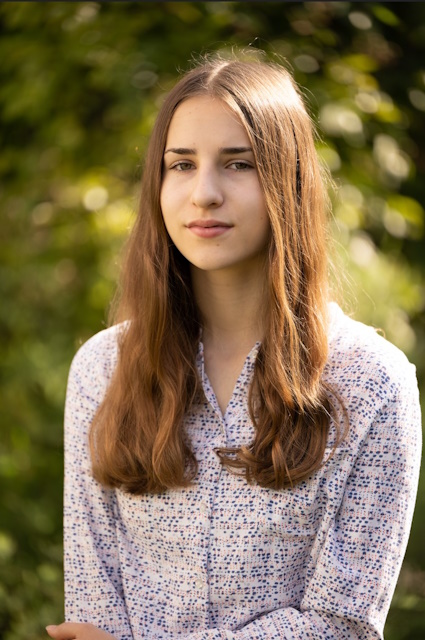
Photo by Gordon Laing
Key Features
- E-Mount Lens/Full-Frame Format
- Aperture Range: f/2.8 to f/22
- One XA Element & Two Aspherical Elements
- Four ED Elements & Two Super ED Elements
- Nano AR Coating
- Dual Linear & Super Sonic Wave AF Motors
- Optical SteadyShot Image Stabilization
- Focus Hold Buttons; Focus Range Limiter
- Dust and Moisture-Resistant Construction
- Rounded 11-Blade Diaphragm
The Sony FE 70-200mm f/2.8 GM OSS lens is a versatile telephoto zoom lens designed for Sony’s full-frame mirrorless cameras. It features a bright f/2.8 aperture, advanced optical elements, SteadyShot image stabilization, and fast and accurate autofocus performance. The lens is durable and weather-sealed, making it resistant to dust and moisture. Additional features include a customizable focus hold button, a focus range limiter, and a removable tripod collar for added stability when shooting on a tripod.
The lens is suitable for a wide range of applications, including sports, wildlife, events, and portraiture. The complex optical construction effectively minimizes various aberrations, distortions, and color fringing, resulting in exceptional sharpness, clarity, and color accuracy in images.
The Dual XD Linear Motor system enables quick subject acquisition and precise tracking, making it suitable for capturing fast-paced action or moving subjects.
Pros and cons
| Pros | Cons |
|---|---|
| Excellent image quality | Heavy and expensive |
| Fast and accurate autofocus | Not as good for close-up photography as some other lenses |
| Built-in image stabilization | Weather-sealed |
| Circular aperture for smooth bokeh | Long and bulky |
| High-quality construction | Not as portable as some other lenses |

Photo by Sony
Conclusion
Choosing the right lens is crucial for capturing high-quality portrait photographs. When selecting a lens, factors such as focal length, aperture, and image stabilization should be considered.
A prime lens with a focal length between 50mm and 85mm is a popular choice for portraits, as it provides a natural perspective and a shallow depth of field. A wide aperture, such as f/1.8 or f/1.4, can create a beautiful bokeh effect and help isolate the subject from the background.
Zoom lenses can also be a good choice for portrait photography, as they offer versatility and the ability to quickly adjust framing without physically moving. However, it’s important to choose a zoom lens with a wide aperture, such as f/2.8 or wider, to achieve a shallow depth of field and create a pleasing bokeh effect. Image stabilization can also be helpful in low-light situations or when shooting handheld.
Ultimately, the best lens for portrait photography will depend on personal style and the specific needs of the shoot.
Related posts
What Is A Good Lens For Portraits
Best Canon Lenses For Portrait Photography
Best Canon Lens For Portrait Photography
What Is The Best Portrait Lens For Nikon? – The Top 5!
Best Lens For Portrait Photography – Third Party Lenses
Thanks for reading, I hope you enjoyed the article, in case you have any questions just drop them below & I will be happy to answer you.
The featured Image by Irina Gromovataya from Pixabay
If you enjoy the site, don’t forget to subscribe, we will only inform you when a new article is posted.


























Hi Amin, Your web page is brilliantly put together to offer advice on lenses in one page. I like the fact that the visitor will find everything here without having to search through may pages. It provides a comprehensive overview of selecting the right lenses for portrait photography in 2023. It emphasizes the importance of choosing the correct lens, as it significantly impacts the quality of portrait images, very well.
Overall, the web page provides a well-rounded guide for photographers seeking the best lenses for portraits. It adequately covers important factors to consider, explains the differences between prime and zoom lenses, and reminds readers to check compatibility. The information is presented clearly and concisely, making it easy to understand and apply when making informed lens choices for portrait photography.
Well done
Thank you for your kind words and positive feedback on the web page! I’m thrilled to hear that you found it to be a comprehensive and helpful resource for selecting the right lenses for portrait photography in 2023. It’s great to know that the information was presented clearly and concisely, making it easy for visitors to understand and apply when making informed lens choices.I appreciate your recognition of the importance of choosing the correct lens for portrait photography, as it can indeed have a significant impact on the quality of the images. I hope this guide continues to be a valuable resource for photographers seeking the best lenses for their portrait work.Thanks again for your support
I recently came across this captivating article on the 15 best lenses for portraits, and I must say it provides a comprehensive guide for photographers looking to elevate their portrait photography. Your expertise and insightful recommendations make it a valuable resource for both aspiring and seasoned photographers.
What impressed me most about this article is the author’s selection of lenses and their understanding of the specific qualities required to capture stunning portraits. They delve into the technical aspects of each lens, such as focal length, aperture, and image stabilization, providing readers with a clear understanding of how these features contribute to the overall portrait-taking experience.
I highly recommend this article to anyone passionate about portrait photography. Your in-depth knowledge, thoughtful recommendations, and visual examples make it a valuable resource for photographers seeking to elevate their craft. By exploring the lenses presented in this article, one can unlock new creative possibilities and capture portraits that truly reflect the essence and beauty of their subjects.
Thank you for your thoughtful and encouraging feedback on the article about the 15 best lenses for portraits! I’m delighted to hear that you found it to be a comprehensive guide and a valuable resource for both aspiring and seasoned photographers.
It’s great to know that the selection of lenses and the understanding of their specific qualities resonated with you. I’m glad that the technical aspects, such as focal length, aperture, and image stabilization, were explained in a way that provided a clear understanding of their contributions to the portrait-taking experience.
I appreciate your recommendation of the article to others passionate about portrait photography. It’s my hope that the in-depth knowledge, thoughtful recommendations, and visual examples continue to inspire and assist photographers in elevating their craft and capturing stunning portraits. Thank you again for your support, and happy shooting!
Thank you for spelling out the unique difference between prime and zoom lenses. I get lost in between both types sometimes. I have used the Sony FE 85mm, and I can testify to its quality. I like it when you emphasized its outstanding image quality. Another feature I enjoyed with the lens is its autofocus system. It brings out the professional touch of my images
Thank you for sharing your experience with the Sony FE 85mm lens! I’m glad that the explanation of the unique differences between prime and zoom lenses was helpful for you. It’s always great to hear from photographers who have firsthand experience with the lenses discussed in the guide.I appreciate your input and hope that the information provided continues to be a valuable resource for you and others in the photography community. Happy shooting!